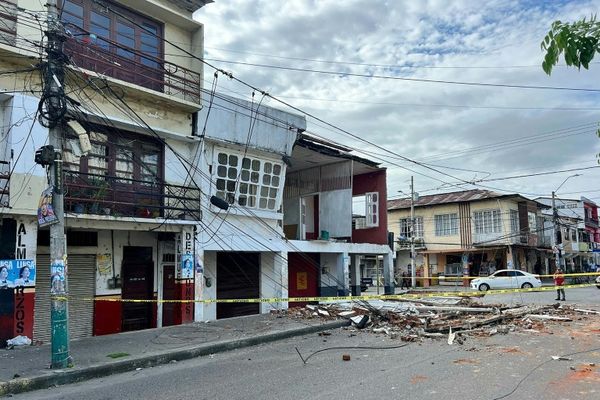
In 1971, Rita Curran, a 24-year-old schoolteacher, was found strangled to death in her apartment in Vermont. The college town of Burlington, where Curran taught second grade, was devastated. Police interviewed Curran’s neighbors, investigated hundreds of tips and collected evidence including a single cigarette butt found near her arm, but were unable to name her killer.
Curran’s murder, unsolved for more than five decades, became one of Vermont’s most notorious cold cases. That changed this week, when police detectives announced the identity of her murderer – a male neighbor, police say, who later became a Buddhist monk and countercultural guru before dying of an overdose in 1986.
DNA technology and genealogical research have linked the cigarette butt found near Curran’s body to William DeRoos, who lived upstairs in the same apartment block. Investigators interviewed DeRoos in the 1970s but ruled him out.
“We’re all confident that William DeRoos is responsible for the aggravated murder of Rita Curran,” Lt Jim Trieb, a Burlington police detective, announced on Tuesday.
This case is the latest example of forensic science catching up to crimes formerly considered unsolvable, sometimes long after perpetrators are themselves gone.
“Even though he’s dead, and there won’t be justice, it is a really positive outcome,” CeCe Moore, a genealogical investigator at Virginia-based Parabon NanoLabs, said. Moore’s research identified DeRoos. “And it is a great illustration of how investigative genetic genealogy is resolving these cases that so many people have cared about for so many years.”
In the summer of 1971, Curran had recently moved into a shared apartment. She was working as a hotel maid and taking graduate courses at the University of Vermont while waiting for school to start. Around midnight on 19 July, her housemates found her dead. She had been attacked, sexually assaulted and asphyxiated.
DeRoos, who lived two floors above Curran with his then wife, was not one of the investigation’s 13 main suspects. His wife told police that they were home all night.
Patrick Leahy, the retired US senator representing Vermont, was the area’s county prosecutor at the time. In 2016, Leahy said that police and prosecutors had, for a period, considered Ted Bundy a suspect.
Bundy, who was born in Burlington, was thought to have been in the area around the time Curran died. Shortly before his execution in 1989, however, he denied responsibility.
Curran’s death became known as Burlington’s oldest cold-case murder. In 2014, Burlington police decided to reprocess the evidence using modern technology. Male DNA was found on the cigarette found near Curran’s body, but it did not match a national felon database or any of the 13 primary suspects.
The Burlington police reopened the case, again, in 2019. Detectives sent the cigarette DNA to Parabon.
It took Moore only a few hours to identify DeRoos.
“At the top of the list were two people who shared enough DNA with the unknown suspect to be his first cousin once removed,” Moore said, “and those matches ended up being on both sides of his family tree. That’s extremely unusual. It was shocking.”
Testing of DNA on Curran’s housecoat confirmed the findings. When police re-interviewed DeRoos’ ex-wife, she admitted to deceiving detectives. She said DeRoos, who had a criminal history, had persuaded her that she had to protect him from false incrimination. The couple had married two weeks earlier.
“I think she lied at the time because she was young, she was naive, she was newly married, she was in love,” Thomas Chennette, a Burlington detective, told the press on Tuesday.
In actuality, she and DeRoos had argued that night. DeRoos left the apartment and returned while she was asleep.
He and his wife left Vermont soon afterward. They separated, and DeRoos moved to Thailand to become a Buddhist monk. A few years later he surfaced in California, where he remarried and was known as a countercultural guru called Dutch.
DeRoos’s second wife, from whom he also became estranged, told police that he had a violent temper and had once choked her and non-fatally stabbed a friend. About 15 years after Curran’s death, he died of a drug overdose in a San Francisco hotel room.
Moore said that her discovery would not have been possible without earlier work by the investigators and “generations of detectives” over many years.
“I don’t think so much about the guy who did this as I do about Rita, and my parents and what they went through,” Curran’s brother, Tom Curran, recently told the press.







